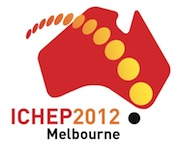Speaker
Prof.
George Wei-Shu Hou
(National Taiwan University (TW))
Description
Despite the hint for a 125 GeV Higgs boson, we consider the other option of MH > 600 GeV, noting that the existence of the Higgs boson itself is not yet an established fact. What we do know is that the Goldstone bosons of electroweak symmetry breaking exist as longitudinal components of the weak bosons. The Goldstone boson coupling to a new heavy chiral quark doublet Q (assuming it exist), the G-Q-Q(bar) Yukawa coupling, would now be in the strong coupling regime, given the LHC limit of MQ > 600 GeV is already beyond the perturbative partial-wave unitarity bound. Such strong Yukawa couplings could induce Q-Q(bar) condensation, which might take the role of the Higgs condensate. Guided by a Bethe-Salpeter equation approach, we identify the leading "collapsed state", the (heavy) isotriplet, color singlet "meson", as the Goldstone boson G itself. Viewing G as a very deeply bound state, a "bootstrap" gap equation without a Higgs particle is constructed. Electroweak symmetry breaking via strong Yukawa coupling generates both heavy mass for Q, while self-consistently justifying the keeping of G as a massless Goldstone particle in the loop. We solve such a gap equation, and investigate the mass of heavy quarks in this bootstrap picture, which is found to be not less than a TeV. We consider also a scale-invariant model by Hung and Xiong, in which a massless scalar doublet phi couples strongly with Q, which induces electroweak symmetry breaking. Although a gap equation similar to the one in the bootstrap picture can be written down, we discuss differences with the results of Hung and Xiong, as well as offer a brief critique.
Author
Prof.
George Wei-Shu Hou
(National Taiwan University (TW))
Co-authors
Hiroaki Kohyama
(Chung Yuan Christian University)
Yukihiro Mimura
(National Taiwan University)
